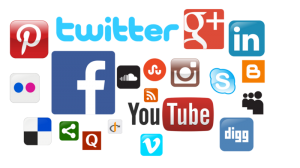Running Windows 10 With My Woes

Pop quiz: What is the top smartphone on the market right now? Chances are you thought of the Apple iPhone 6S, the Samsung Galaxy S6+ or the Galaxy Note 5. You may have even considered the HTC One M9 or the Google Nexus 6P. But did you ever consider the Microsoft Lumia 950?
Microsoft released Windows Phone 7 (WP7) in 2010. To differentiate from Apple and Google Microsoft opted for a flat, minimalist design when compared to the then-rounded designs of their competitors. WP7 utilized what became known as the Metro UI (user interface), with resizable “Live Tiles” that were later incorporated into the Xbox 360 dashboard and Windows 8 on PC. Rather than directly copying Android’s widgets, Live Tiles allowed for quick notifications at a glance without users having to open their apps for information (this may sound familiar to iPhone 6S users). Aside from the typical smartphone essentials, WP7 allowed users to customize their OS theme by changing the color of their font and Live Tiles to match their moods. Social media feeds such as Facebook, Twitter and LinkedIn were directly integrated into the OS, never forcing users to open apps. Facebook Chat was directly integrated into the Messaging hub. Tweets and Facebook Walls/Timelines were accessible from the People hub. Xbox Live was on your phone. Zune Music was the basis for the Music + Videos hub. These experiences gave users a sense of uniqueness that was missing at the time when compared to iPhone and Android.
Despite the initial excitement, Microsoft constantly struggled to make a significant dent in the smartphone market. They released Windows Phone 8 in 2012 and 8.1 in 2014. 8 streamlined the design of the OS, but users noticed the increasing similarities between the Windows apps and those of iOS and Android as Microsoft targeted new users and converts. When moving from WP7 to WP8, the base code of the OS changed, essentially meaning it had to be rebuilt from the ground up. Old phones could not upgrade, forcing existing users to purchase new devices in order to keep up with the software. But there was a bigger concern: Windows Phones had 100,000 apps while iOS and Android had passed 600,000 each. Developers were hesitant to create apps for the platform, and consumers were furious over the lack of availability of popular apps and games. Third-party developers, such as Rudy Huyn, flourished, creating their own versions of popular apps like Instagram, Vine, and Snapchat (for a time) to ease user frustration. Google ended what little support they were giving in 2013, choosing to focus primarily on their own products. With 8.1, Microsoft rolled out Cortana, the Halo-themed digital assistant, to compete with Apple’s Siri. But despite Cortana’s competitive ability, it was too little, too late.
The International Data Corporation (IDC) publishes quarterly reports on smartphone sales. Since 2012, Microsoft has never held more than 3.4% of the global smartphone market. When IDC published its 2015 global smartphone report, they tallied over 1.4 billion smartphone sales. Samsung lead the charge, accounting for 22.7% of the market (324.8 million) with Apple in second place with 16.2% (231.5 million). Meanwhile, Microsoft reported it had sold just 4.5 million devices from the Lumia line- the most popular Windows Phones on the market. Some may say the writing is on the wall while others await the official eulogy. Where did Microsoft go wrong? Long story short: They forgot to make their actual customers happy. Until Satya Nadella became CEO, Microsoft’s mobile strategy was a strange mix of rebranding and rebuilding. Now, with the pending public release of Windows 10 Mobile, Windows Phone owners are patiently waiting one last time.



